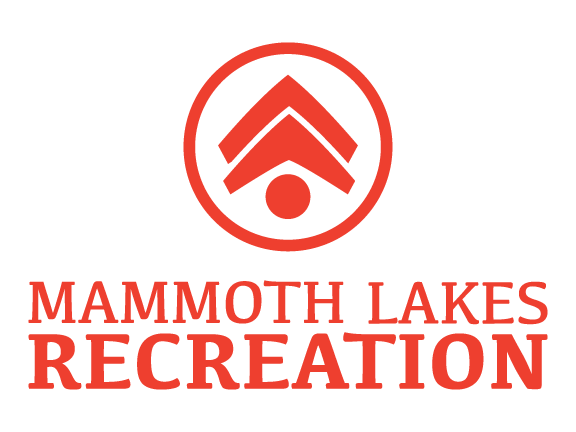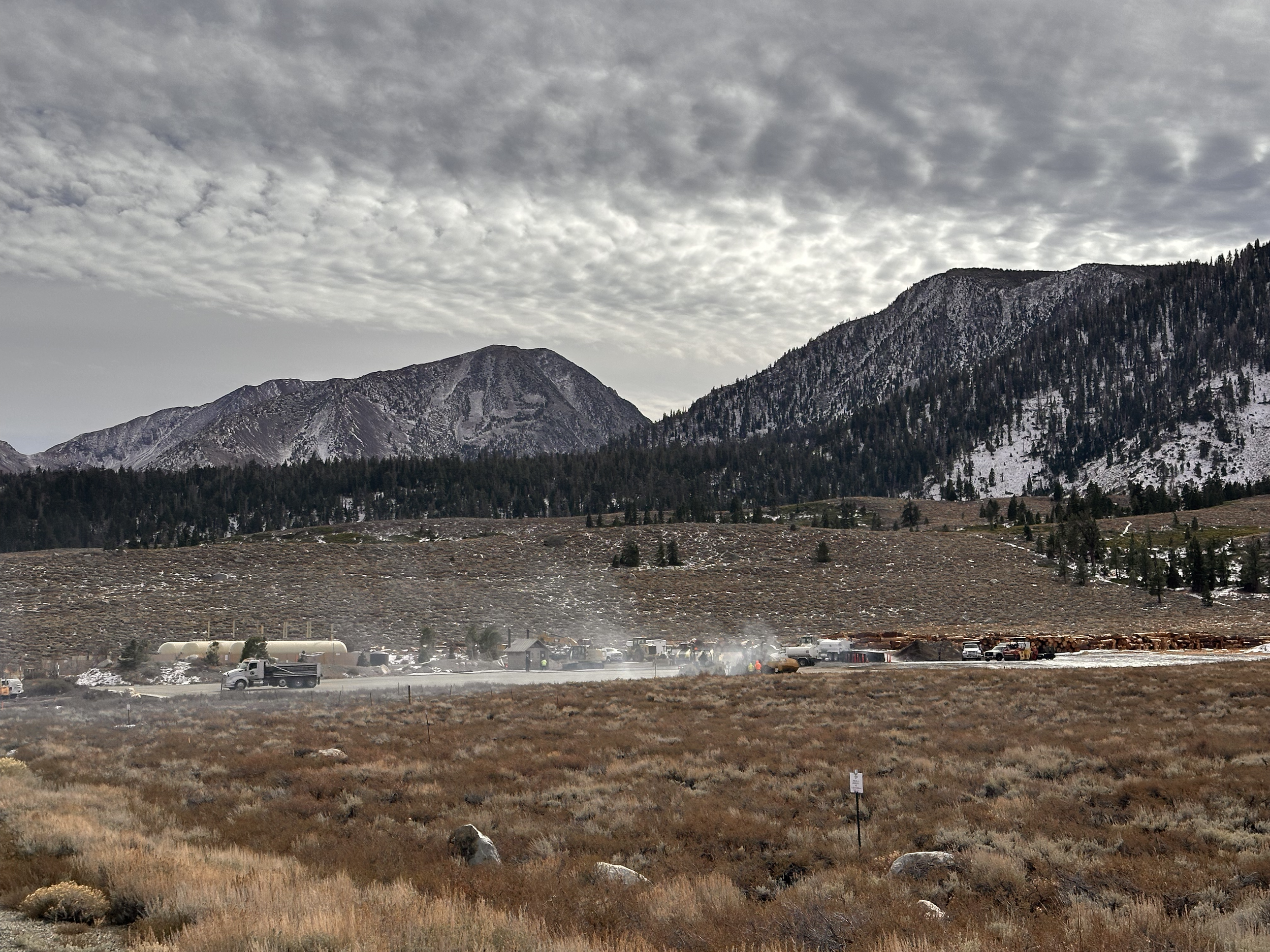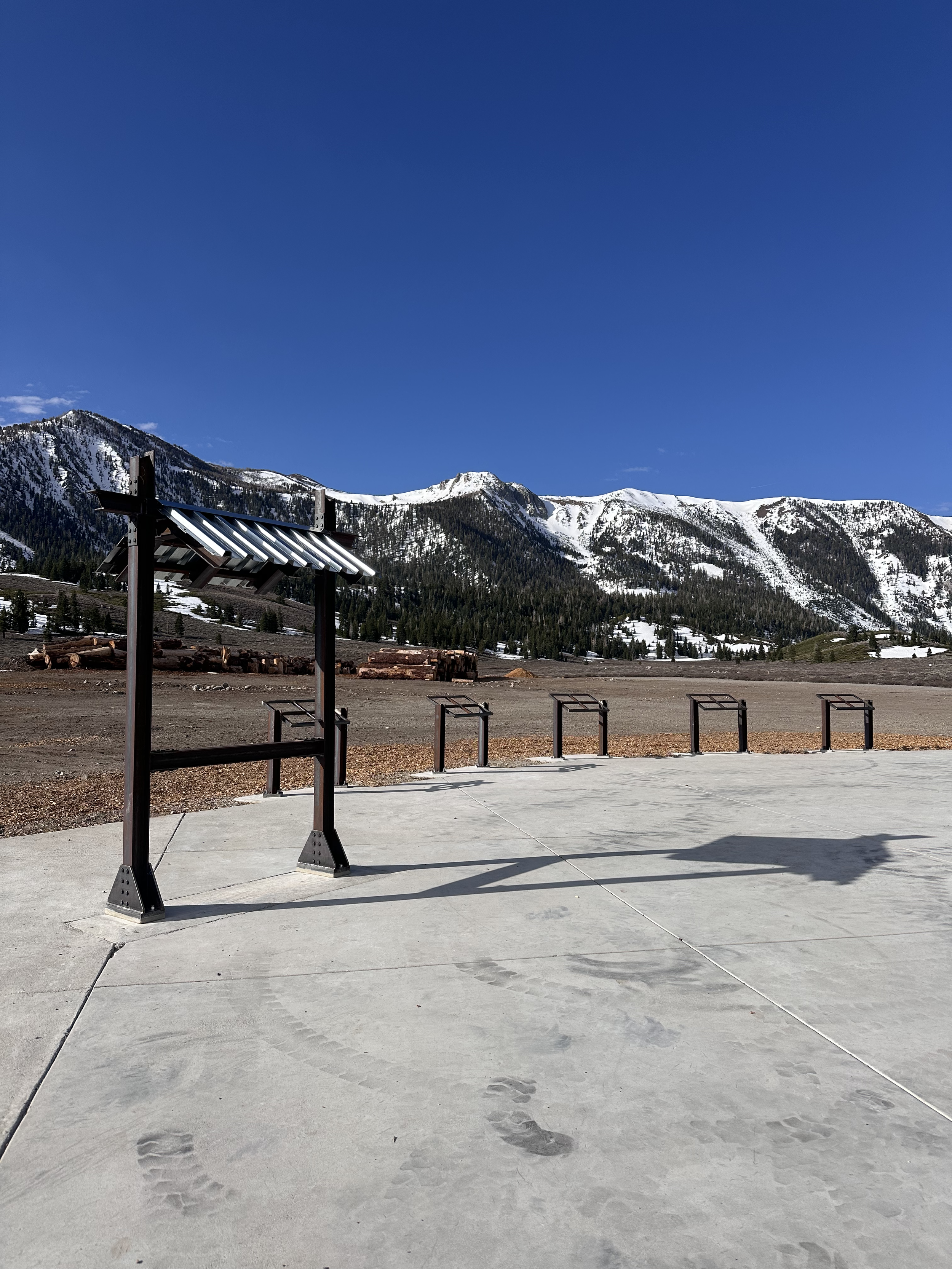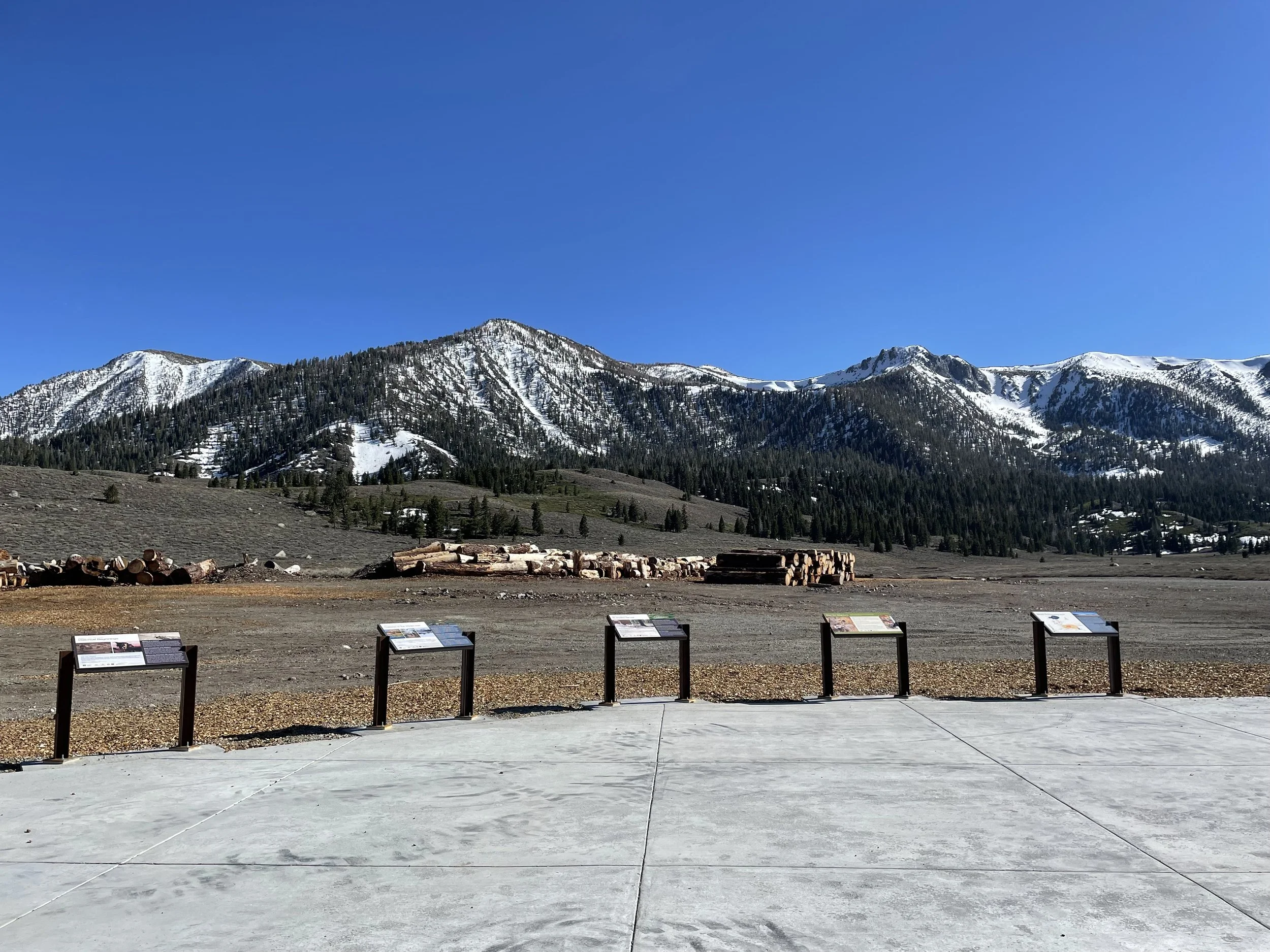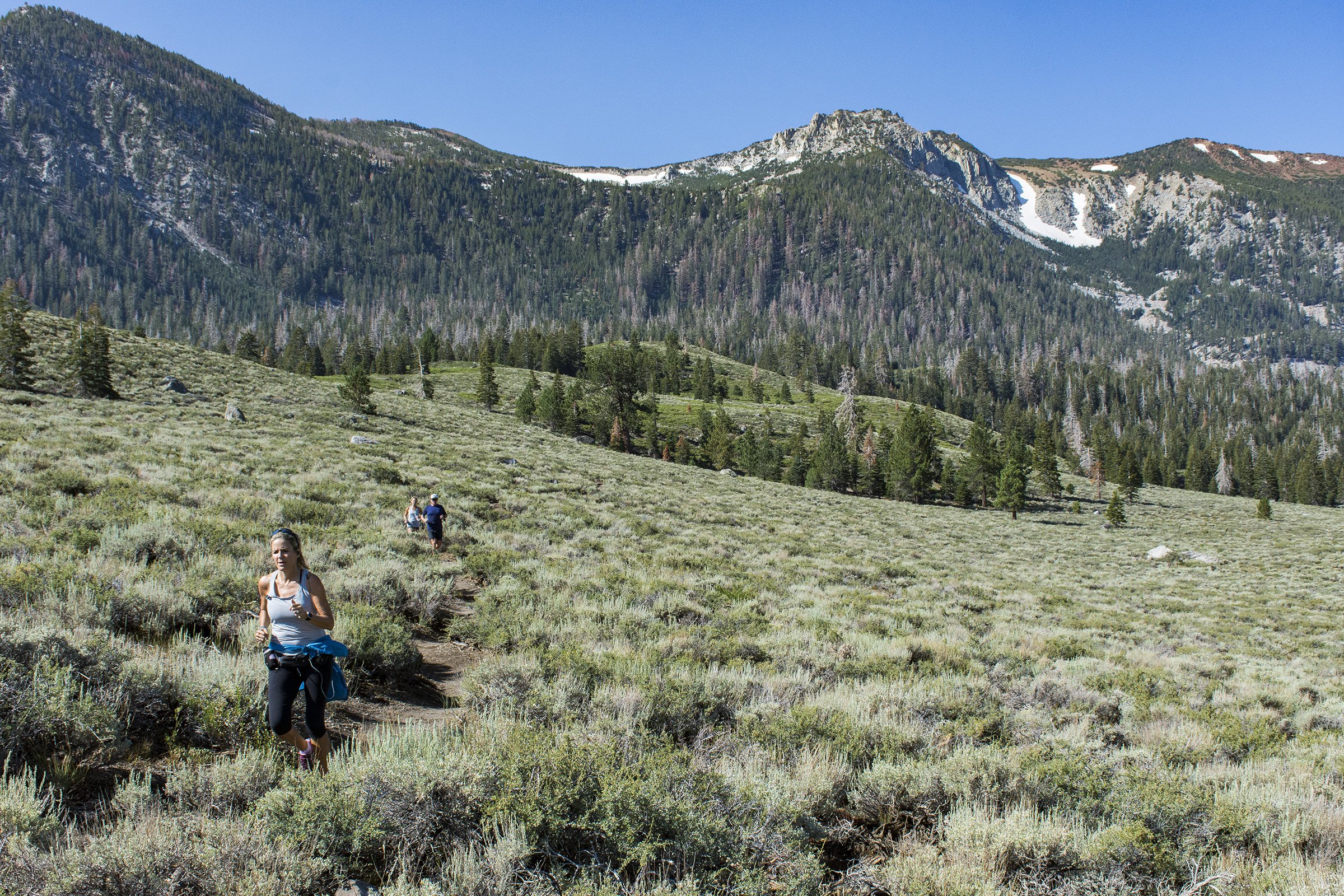
SHERWINS AREA TRAILS + TRAILHEADS
SHERWINS PROJECT NEWS
SHERWIN MEADOWS TRAILHEAD - PROJECT COMPLETE!!
SHERWINS AREA TRAIL PLANNING - SHARP 3 UPDATES:
3.6 MILES OF NEW TRAIL CONSTRUCTION COMPLETE
1.2 MILES OF USER-CREATED TRAIL ADOPTED INTO SYSTEM
ABOUT THE PROJECT
In December 2022, Mammoth Lakes Recreation was awarded two grants from Sierra Nevada Conservancy totaling $1,460,000 to fund this multi-faceted project. A $510,000 planning grant for the Sherwins Area Trails and Trailhead Expansion will fund the environmental analysis on approximately 20 miles of new trail and an expanded trailhead area. The second award is a $950,00 implementation grant for the Sherwins Trailhead to provide a paved parking area and several new amenities including a double vault toilet.
The recreation use in the Sherwins area has traditionally been high and complex; the area is currently enjoyed year-round by individuals in pursuit of quiet and reflective natural experiences, backcountry skiers and snowboarders, world-class athletes in training, those seeking motorized play, and others. No formal trailheads or facilities exist at this time and as a result, the non-system trail facilities receive no maintenance. The Sherwins area remains popular with residents and guests alike. There is a desire to provide a level of service that residents and visitors can be proud of, enhancing several existing facilities and building new trail facilities to better accommodate the level of use. The Sherwins Area Trails proposal includes new trail construction, reconstruction of user created trails, and decommissioning of user created trails.
The Town of Mammoth Lakes Trail System Master Plan, Sherwins Area Recreation Plan (SHARP), and subsequent Programmatic Environmental Impact Report support this proposal with concepts for trail facility development. Projects included are derived from these existing documents and years of public outreach and participation. These remaining concepts from the Sherwins Area Recreation Plan have been refined over time by staff and volunteers with some of the preliminary resource work completed. View the Sherwins Area Recreation Story Map below to follow the history and evolution of SHARP.
The perseverance of all has paid off with two great accomplishments for this project. On June 7, 2025, Mammoth Lakes Recreation along with the Town of Mammoth Lakes, and the Sierra Nevada Conservancy held a ribbon cutting ceremony at the new Sherwin Meadows Trailhead. The ceremony was followed by a day of stewardship in which 35+ volunteers kicked off the Office of Outdoor Recreation’s “Summer of Stewardship” events. We picked up trash and recycling, lopped trail, stained signs, delineated trail, dispersed native seeds, and installed the new bike rack! The trailhead now boasts a double vault restroom, animal-resistant food storage, trash receptacles, bike rack, sign/map kiosk, interpretive panels, picnic tables, bike maintenance station, pet waste bags, ADA accessible parking, and pull-through trailer parking.
To top off the goodness, on June 11, 2025, District Ranger Fred Wong issued a signed Decision Memo for SHARP 3! Construction of the new trails began immediately. As of October 2025, the Town of Mammoth Lakes Trail Crew, with the help of many volunteers, has completed 3.6 miles of new trail construction and performed maintenance on an additional 1.2 miles of user trails that have been adopted into the system.
The Inyo National Forest is currently developing a scope of work for SHARP 4 which will determine the fieldwork to be completed in Spring 2026.
DOCUMENT LIBRARY
-
-
-
CEQA - Notice of Determination - Sherwins Traihead (2022)
Sherwins Access/Egress Program (2021/22)
Lakes Basin and Sherwins Area Trail Enhancement Project (2020)
SHARP Environmental Review: Phase III (2018)
SHARP Environmental Review: Phase II (2018)
SHARP Environmental Review: Phase I (2017)
TOML Trail System Master Plan (2011)
CEQA - Notice of Determination - Trail System Master Plan (2011)
CEQA - EIR - Draft EIR - Mammoth Lakes Trail System Master Plan (2011)
SHARP -Sherwins Area Recreation Plan (2009)
SWG - Sherwins Working Group (2009)
SATSS - Sherwins Area Trails Special Study (2009)
-
Decision Memo - Sherwin Area Recreation Plan (SHARP) 3
Inyo National Forest News Release (2025)
Inyo National Forest Letter of Support (2022)
Program of Work Letter - December 2021
Lakes Basin Connector Trails Enhancement
Inyo National Forest Over Snow Vehicle (OSV) Use Designation
OUTREACH
FREQUENTLY ASKED QUESTIONS
-
Yes, multi-use non-motorized.
-
This project includes trails that are classified as multi-use, non-motorized natural surface trails. The trails will be designed and constructed to accommodate hikers, bikers, runners, and equestrians.
-
No. Trails will be non-motorized, multi-use.
-
Once a project proposal is submitted, the U.S. Forest Service will determine the appropriate environmental analysis.
-
An inventory of disturbed areas and identified segments of roads will be included for recommended restoration projects. A team of resource specialists will be providing direction and recommendations.
-
During this planning process, all reasonable concepts are being considered within the context of the Sherwins Area Recreation Plan. We strongly encourage feedback and participation for trail system improvements, expansion and stewardship.
-
There is never a guarantee for maintenance of any trail system. Strong agency partnerships are key to successful management. Continued support from the public, local and State representatives help to sustain facilities over time. Together, community members, land managers and local government agencies will create a Trails Plan with a vision to enhance sustainable recreation opportunities on public lands and contribute to shared stewardship and on-going maintenance of facilities. The Town of Mammoth Lakes Measure R Trails Program currently maintains around 30 miles of existing USFS trails within the municipal boundary of the Town.
-
Yes, we need to hear from you! Local knowledge and thoughtful feedback will ensure the highest quality outcome. We want to engage community members in the planning process to understand where and how community members use local trails and where they would like to have improved access to surrounding public lands.
-
Implement a rolling contour trail design standard
Identify and avoid all sensitive resource areas
Create trail connections between existing system facilities
-
The National Environmental Policy Act (NEPA) process begins when a federal agency develops a proposal to take a major federal action. The environmental review under NEPA can involve three different levels of analysis:
Categorical Exclusion determination (CATEX)
Environmental Assessment/Finding of No Significant Impact (EA/FONSI)
Environmental Impact Statement (EIS)
A federal action may be “categorically excluded” from a detailed environmental analysis if the federal action does not, “individually or cumulatively have a significant effect on the human environment”. CATEX are not exemptions or waivers of NEPA review; they are simply one type of NEPA review. To establish a categorical exclusion, agencies determine whether a proposed activity is one that, on the basis of past experience, normally does not require further environmental review. Once established, categorical exclusions provide an efficient tool to complete the NEPA environmental review process for proposals that normally do not require more resource intensive EA or EIS. The use of categorical exclusions can reduce paperwork and delay, so that EA’s or EIS’s can be targeted toward proposed actions that truly have the potential to cause significant environmental effects. A federal agency can determine that a CATEX does not apply to a proposed action. The federal agency may then prepare an EA. The EA determines whether or not a federal action has the potential to cause significant environmental impacts. Federal agencies prepare an EIS if a proposed major federal action is determined to significantly affect the quality of the human environment.
-
The average cost for construction of natural surface trails is $5 per foot. The cost of soft surface trail construction is estimated at $475,200. New Trailhead construction is estimated at $1 million. The Mammoth Lakes Trail System (MLTS) is primarily funded through the Measure R Special Tax. The MLTS program budget includes capital funding for this project and others like it.
Measure R or “Mammoth Lakes Recreation, Trails and Parks Investment Initiative” was approved by voters in 2008. The Ordinance imposed a Transactions and Use Tax in the amount of one-half percent for the purpose of funding Recreation, Trails and Parks.In December 2022 MLR was awarded $1,460,000 in grant funding through the Sierra Nevada Conservancy. $950,000 is alotted for implementation of the shovel-ready trailhead and $510,000 for the planning and envoironmental analysis of the proposed trail alignments. This generous grant funding leverages the Measure R funds committed to the project.

